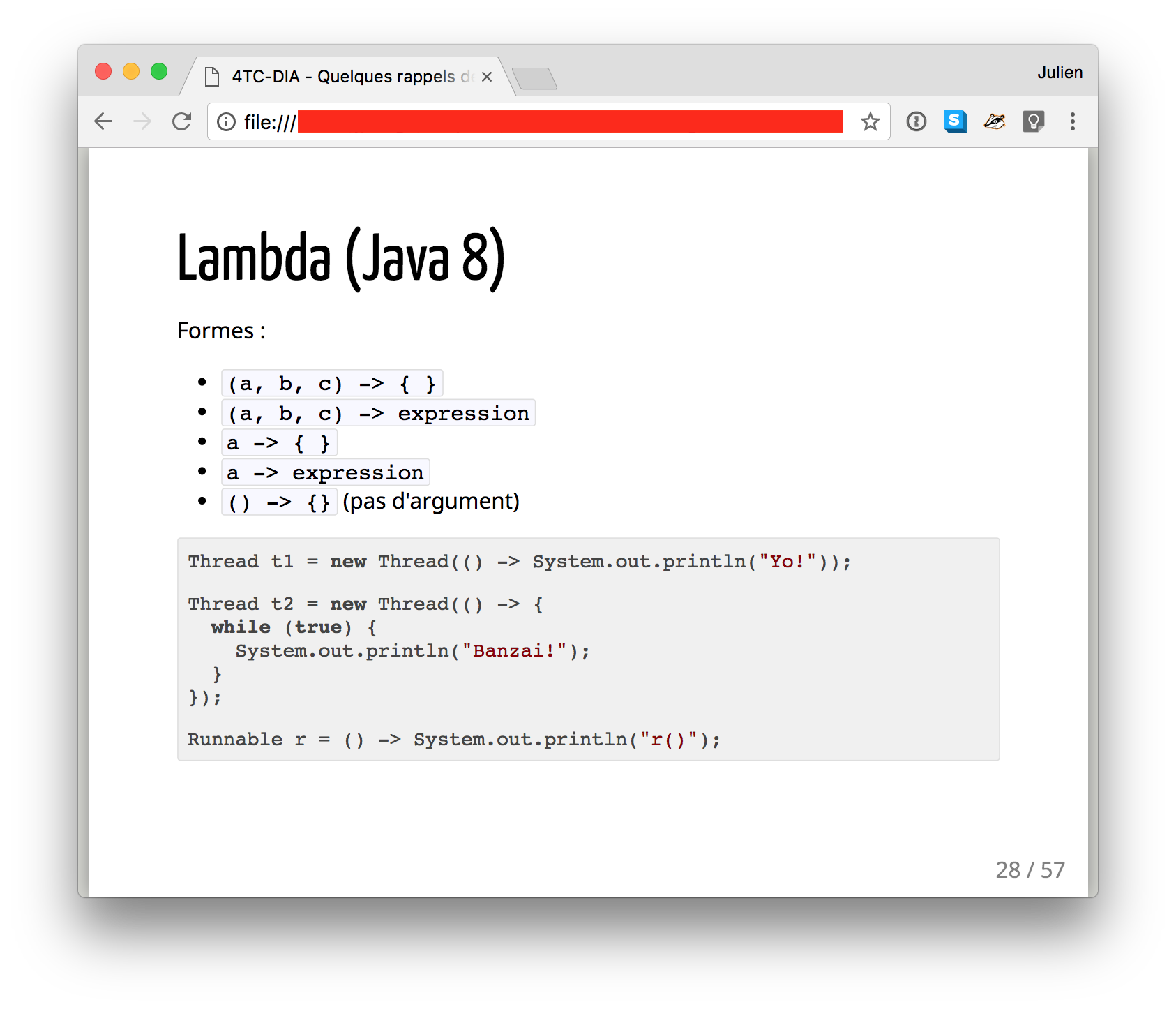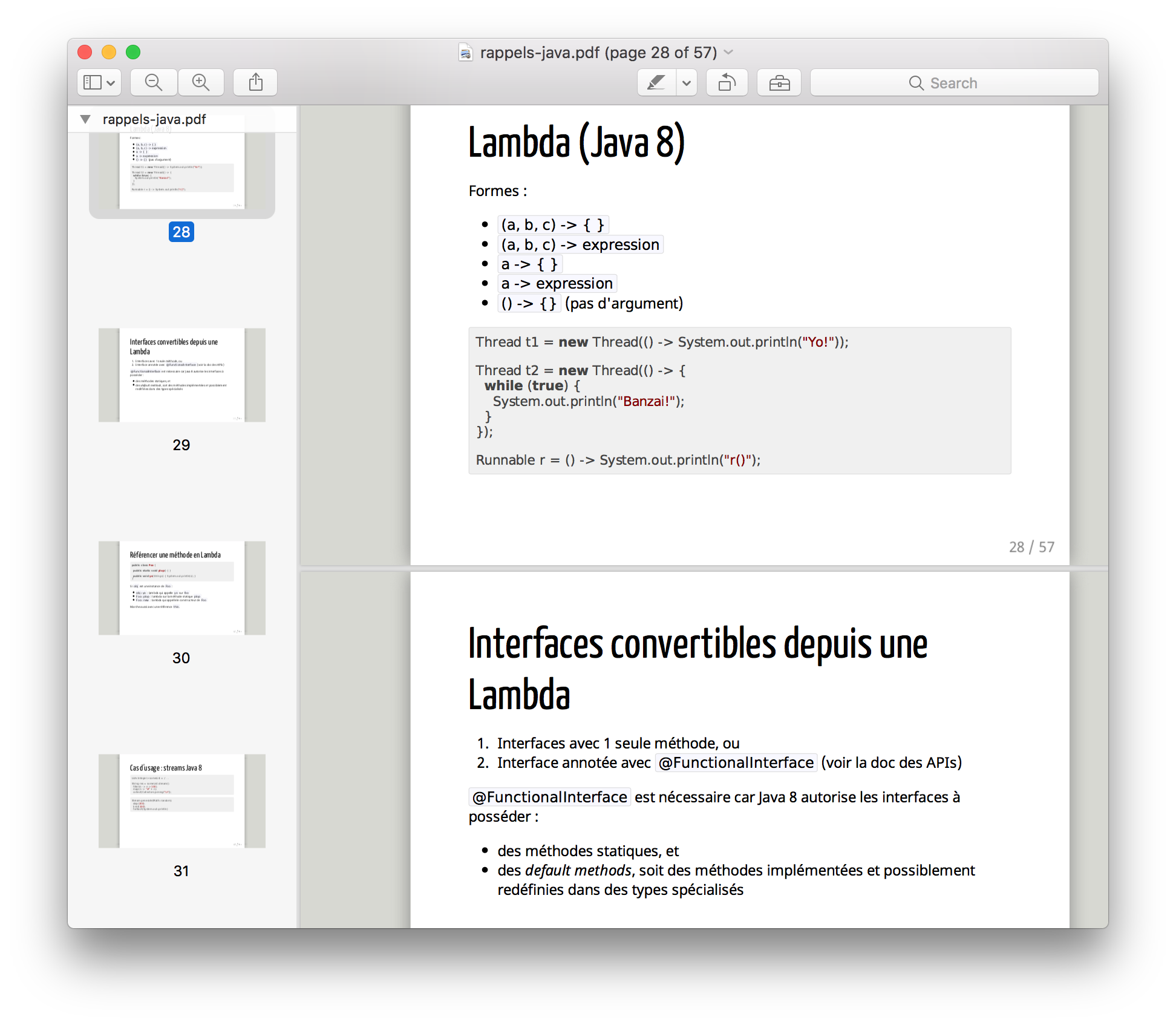Exporting HTML Slides in Markdown to PDF
I am not a big fan of HTML slides. For sure many fancy tools and libraries exist in that space, but no matter what I always prefer the pixel-perfection of a tool like Apple Keynote. Pushing pixels is what I prefer doing for public talks and important meetings.
The flip side of the coin is that crafting great slide decks is time consuming. There is a context where having just good enough slides is key: teaching.
Teaching slide decks are always big, and you need to put lots of text for students. Doing a public talk with lots of text is a major faux-pas, but when doing teaching a reasonable amount of text it is actually helpful. I’m in computer engineering, so my slides tend to have lots of code snippets: this is an area where traditional presentation softwares fall short.
Last but not least: teaching slide decks need to be frequently updated, refactored and remixed, so any tooling friction is painful.
Markdown to HTML
There are many fancy tools with rollercoaster visual effects on slide transitions. I like none of them, so I went with the simple and effective markdown-to-html.
This way I can just type some Markdown, as in:
---
class: middle, left
# Basic stuff
---
# A class...
`src/main/java/fr/insa/tc/mid/Hello.java`
```java
package fr.insa.tc.mid;
import java.util.List;
import java.util.ArrayList;
public class Hello {
private final List list = new ArrayList();
public void doStuff() {
list.add("A");
list.add("B");
list.add("C");
}
}
```
Except for the class attributes that allow some layout and positioning, it’s just Markdown with slides being separated by --- rulers.

I am using the default CSS stylesheet with some font adjustments. The great thing with markdown-to-html is that it is very easy to customize.
Rendering slides to HTML is done with this quick shell script:
#!/bin/bash
for f in *.md; do
markdown-to-slides -s style.css -o "$(basename $f .md).html" $f
donePDF export
Some students have asked me for a PDF output. Fortunately it is not very complicated to do!
I recommend DeckTape for that purpose. Like most HTML to PDF renderers, it takes control of a web browser engine via PhantomJS to capture slide images then assemble them as a PDF.
If you use DeckTape as a one-shot tool just like I do, it is perhaps easier to use the Docker image. Again, a shell script does the heavy work:
#!/bin/bash
for f in *.md; do
deck=$(basename $f .md)
docker run --rm -v `pwd`:/slides astefanutti/decktape $deck.html $deck.pdf
doneThe way it works is simple:
--rmensures the container gets erased after execution,-vallows mounting the local folder to/slidesin the container,- DeckTape then does the magic.
Easy, isn’t it?
